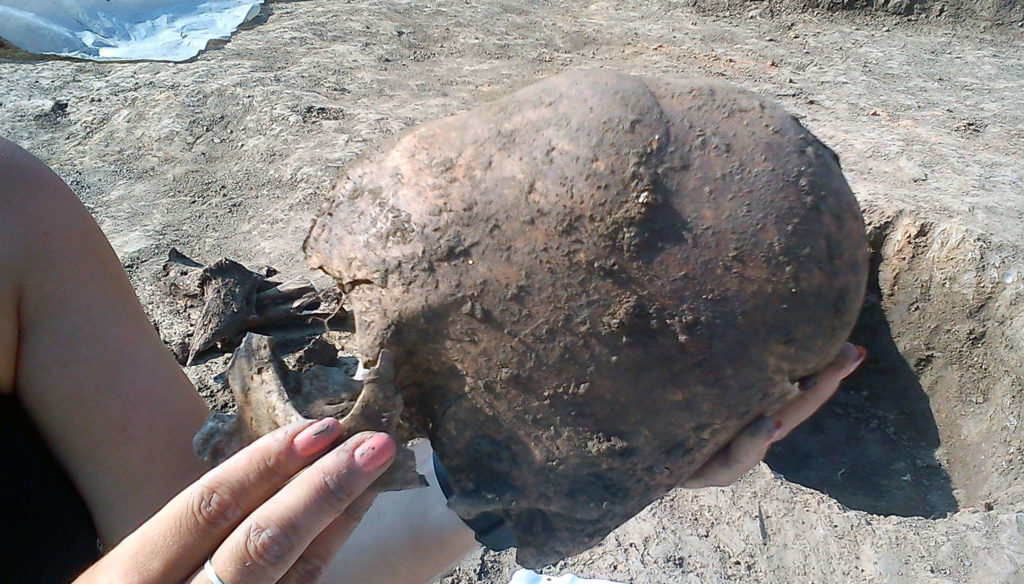“We were inspired to study these individuals based on their unusual burial context as well as the identification of two different types of artificial cranial deformation in two of the individuals,” says Daniel Fernandes, a postdoctoral fellow at the Department of Evolutionary Anthropology, University of Vienna and one of two co-first authors of the study. “Artificial cranial deformation is a deliberate act performed on infants with the aim to achieve a desired skull shape using boards, pads or specially-made headdresses,” adds Kendra Sirak, postdoctoral fellow at David Reich’s lab at Harvard Medical School and another co-first-author.
This is a widespread cultural phenomenon that has been recorded in various ancient populations around the globe and that is performed to denote group and/or individual identity, i.e. to distinguish particular people from others or to provide visible evidence of status, nobility or affiliation to a certain class or group.
“While all three were adolescent males with skeletal evidence of severe malnutrition and similar diets, the most striking observation is that they had major differences in their genetic ancestry,” says Mario Novak, one of two co-senior authors, a bioarchaeologist at the Institute for Anthropological Research in Zagreb.
“Results of ancient DNA analyses indicate that the individual without artificial cranial deformation shows broadly West Eurasian associated-ancestry, the individual with the elongated skull has East Asian ancestry and the third individual has Near Eastern associated-ancestry,” continues Ron Pinhasi, head of the ancient DNA laboratory at the University of Vienna, who co-directed the study.
Moreover, the individual with East Asian ancestry is the first individual from the Migration Period with a majority of his ancestry originating in East Asia to be found in Europe.
“Based on the presented results, we propose that the type of artificial cranial deformation may have been a visual indicator of membership in a specific cultural group, and that these groups were interacting closely on the Pannonian Plain during the Migration Period,” concludes Novak.
Publication in “PLOS ONE” Daniel Fernandes, Kendra Sirak, Olivia Cheronet, Rachel Howcroft, Mislav Čavka, Dženi Los, Josip Burmaz, Ron Pinhasi, Mario Novak: Cranial deformation and genetic diversity in three adolescent male individuals from the Great Migration Period from Osijek, eastern Croatia
DOI: 10.1371/journal.pone.021636 https://journals.plos.org/plosone/article?id=10.1371/journal.pone.0216366
scraped from https://www.newswise.com/articles/cranial-deformation-as-an-indicator-for-cultural-membership
